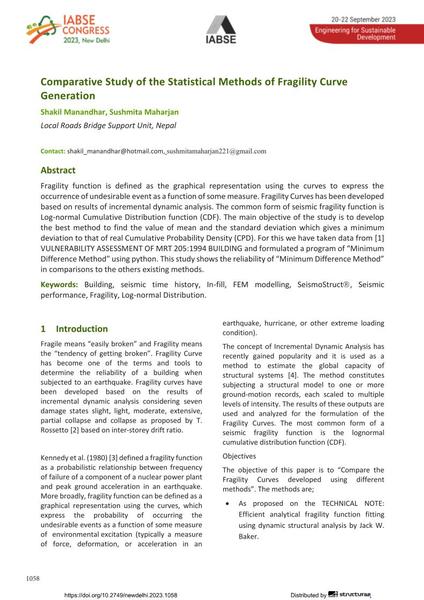Comparative Study of the Statistical Methods of Fragility Curve Generation

|
|
|||||||||||
Bibliographic Details
| Author(s): |
Shakil Manandhar
(Local Roads Bridge Support Unit, Nepal)
Sushmita Maharjan (Local Roads Bridge Support Unit, Nepal) |
||||
|---|---|---|---|---|---|
| Medium: | conference paper | ||||
| Language(s): | English | ||||
| Conference: | IABSE Congress: Engineering for Sustainable Development, New Delhi, India, 20-22 September 2023 | ||||
| Published in: | IABSE Congress New Delhi 2023 | ||||
|
|||||
| Page(s): | 1058-1063 | ||||
| Total no. of pages: | 6 | ||||
| DOI: | 10.2749/newdelhi.2023.1058 | ||||
| Abstract: |
Fragility function is defined as the graphical representation using the curves to express the occurrence of undesirable event as a function of some measure. Fragility Curves has been developed based on results of incremental dynamic analysis. The common form of seismic fragility function is Log-normal Cumulative Distribution function {CDF). The main objective of the study is to develop the best method to find the value of mean and the standard deviation which gives a minimum deviation to that of real Cumulative Probability Density {CPD). For this we have taken data from [1] VULNERABILITY ASSESSMENT OF MRT 205:1994 BUILDING and formulated a program of “Minimum Difference Method” using python. This study shows the reliability of “Minimum Difference Method” in comparisons to the others existing methods. |
||||
| Keywords: |
seismic performance fragility building FEM modelling seismic time history In-fill SeismoStruct Log-normal Distribution
|
||||
